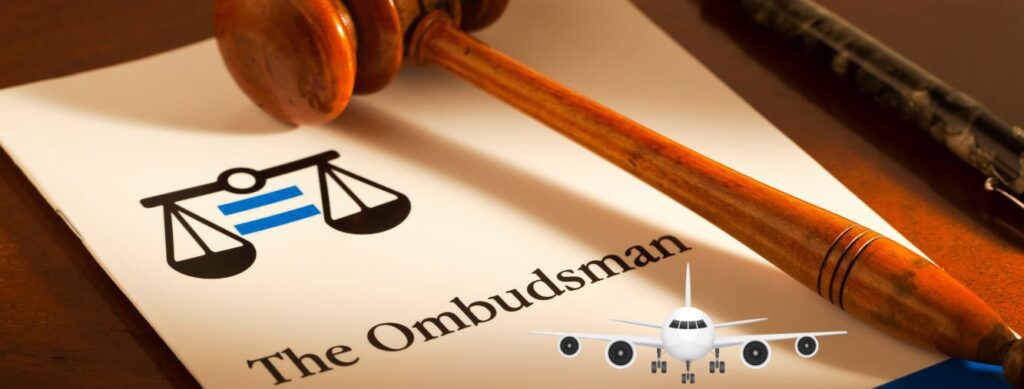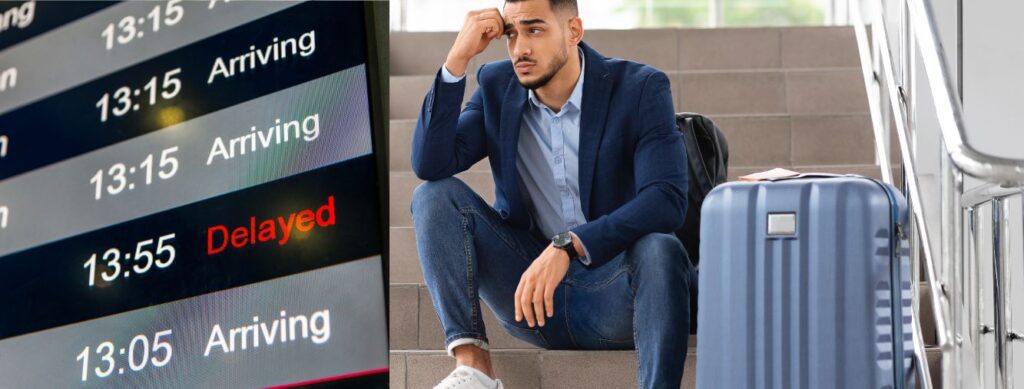Not yet. But there will be by 2026 and they will govern the aviation sector until 2050.
Aviation Industry Ombudsman
A new aviation industry ombudsman has been confirmed today in Australia. This development is part of a broader initiative outlined in the recently unveiled aviation white paper by the Albanese administration, which includes initiatives aimed at enhancing consumer protections in the aviation sector.
In Australia, we have an ombudsman for nearly every industry sector. This addition is certainly a much-needed improvement.
The newly established Aviation Industry Ombudsman will oversee a passenger rights charter that mandates airlines to adhere to fair practices, including the provision of cash compensation for delayed or cancelled flights. This ombudsman will have the authority to handle complaints, publish reports on airline and airport conduct, and refer cases of misconduct to the Australian Competition and Consumer Commission (ACCC) for further investigation.

The introduction of this ombudsman is intended to replace the existing Airline Customer Advocate, which has been criticized for lacking independence and authority. The new framework aims to create a more robust system for addressing passenger grievances and ensuring airlines meet their obligations to customers.
An interim ombudsman is expected to be appointed soon, with the full framework anticipated to be operational by 2026.
Customer Rights Charter
Airline passengers in Australia will soon have a set of legal rights that airlines must follow.
This customer rights charter, part of new laws overseen by an ombudsman, will outline fair practices that airlines and airports must follow, including how they should handle delays and cancellations, as well as how they communicate these disruptions to passengers.
The charter will specify when airlines must give refunds to passengers, requiring that the refund be in the same form of payment that was originally used and processed quickly. This will put an end to airlines offering flight credits or vouchers instead of refunds.
The charter will also define what counts as a reasonable delay and determine if the delay or cancellation was within the airline’s control. This measure will test claims from Qantas and Virgin that their high cancellation rates at Sydney airport are not part of a strategy to schedule more flights than they intend to operate, in order to prevent competitor airlines from using available slots.
What was there up until now?
Up until now and until the Ombudsman is established the Airline Customer Advocate (ACA) serves as a mediator for unresolved complaints regarding major Australian airlines, including Qantas, Jetstar, Virgin Australia, and Rex. However, the ACA has faced criticism for its lack of independence and authority, as it is funded by the airlines it serves and primarily acts as a facilitator of communication rather than having the power to enforce decisions or mandate compensation.

Significant reforms have been underway, with the Australian government announcing the establishment of a new aviation ombudsman. This ombudsman will provide an external dispute resolution service for passengers, ensuring that airlines adhere to a customer rights charter that outlines fair treatment during delays and cancellations. The proposed ombudsman will have the authority to enforce compliance and potentially mandate cash compensation for affected passengers, which is a significant shift from the current system.
The introduction of this new framework is part of broader efforts to enhance consumer protections in the aviation sector, responding to long-standing calls from consumer advocates for stronger oversight and accountability in airline operations.
How will the new ombudsman handle complaints about airline delays and cancellations?
The new Aviation Industry Ombudsman in Australia will have significant powers to handle complaints about airline delays and cancellations:
- The ombudsman will oversee a passenger rights charter that outlines how airlines should treat customers during delays and cancellations. This charter will define what constitutes a reasonable delay and assess whether a delay or cancellation was within the airline’s control.
- Airlines will be required to provide justifications for delays and cancellations as part of their regular reporting to the government. The ombudsman will have the authority to request further details about specific flights, enhancing transparency and accountability.
- The ombudsman will have the power to force airlines to compensate customers for cancelled and delayed flights. This may include mandating refunds, meals, accommodation, and potentially cash compensation, similar to schemes in the US and EU.
- Passengers will be able to file grievances about airline misconduct through an external dispute resolution mechanism provided by the ombudsman. The ombudsman will have the authority to instruct airlines to provide remedies to customers if they fail to meet their obligations.
- The ombudsman will compile reports on airline conduct, offer recommendations to the government, and refer cases of misconduct to the Australian Competition and Consumer Commission (ACCC) for further investigation and possible legal action.
- Unlike the current Airline Customer Advocate, which is funded by airlines and lacks authority, the new ombudsman will be independent and have legal powers to enforce decisions
This new framework aims to significantly strengthen consumer protections in the aviation sector and provide passengers with more robust recourse when facing delays and cancellations.
What would be the difference between an ombudsman in Australia and the EU 261 compensation in Europe?
The new Australian aviation ombudsman and the EU 261 compensation scheme in Europe share some similarities but have key differences:
Similarities
- Both aim to protect air passenger rights and provide compensation for flight disruptions.
- They cover issues such as flight delays, cancellations, and denied boarding.
Key Differences
- Legal Framework:
- EU 261: A specific regulation with clearly defined rules and compensation amounts.
- Australian Ombudsman: Will operate under a broader framework with more flexibility in decision-making.
- Compensation Structure:
- EU 261: Has fixed compensation amounts based on flight distance and delay duration (ranging from €250 to €600).
- Australian Ombudsman: Exact compensation structure is not yet defined, but will likely be more flexible and case-specific.
- Scope of Authority:
- EU 261: Primarily focuses on compensation for delays and cancellations.
- Australian Ombudsman: Will have broader powers, including handling complaints, publishing reports on airline conduct, and referring cases to the ACCC.
- Implementation Timeline:
- EU 261: Has been in place since 2004.
- Australian Ombudsman: Still in development, with full implementation expected by 2026.
- Dispute Resolution:
- EU 261: Passengers often need to pursue claims through courts or national enforcement bodies.
- Australian Ombudsman: Will provide a dedicated external dispute resolution service for passengers.
- Airline Reporting:
- EU 261: Does not have specific airline reporting requirements.
- Australian Ombudsman: Will require airlines to justify delays and cancellations in regular reports to the government.
- Passenger Rights Charter:
- EU 261: Is itself a defined set of passenger rights.
- Australian Ombudsman: Will oversee a new passenger rights charter that defines “reasonable and fair” practices by airlines.
The Australian system appears to be designed with more flexibility and a broader scope of powers compared to the more rigid structure of EU 261. However, the effectiveness of the Australian system will depend on its final implementation and the specific powers granted to the ombudsman.
Drawbacks
What are the potential drawbacks of having an ombudsman in the aviation industry?
While an aviation ombudsman can offer significant benefits for consumers, there are potential drawbacks to consider:

- Industry resistance:
Airlines may oppose the implementation of an ombudsman system, viewing it as an additional regulatory burden. This resistance could lead to delays in implementation or attempts to water down the ombudsman’s powers. - Increased costs:
The costs of operating an ombudsman’s office may be passed on to consumers through higher ticket prices. Airlines might argue that the additional expenses associated with compliance and potential compensation payouts could impact their financial viability. - Complexity of implementation:
Establishing an effective ombudsman system is complex and time-consuming. The Australian government’s timeline of full implementation by 2026 indicates the challenges involved in setting up such a system. - Limited scope:
If the ombudsman only focuses on airlines, it may not address issues related to other parts of the aviation ecosystem, such as airports or travel agents. A more comprehensive approach might be needed for effective consumer protection. - Potential for overregulation:
There’s a risk of creating an overly bureaucratic system that could stifle innovation or flexibility in the industry. Striking the right balance between consumer protection and industry needs can be challenging. - Enforcement challenges:
The effectiveness of the ombudsman will depend on its ability to enforce decisions. Without strong legal backing, the ombudsman’s rulings might be difficult to implement. - Inconsistency with international standards:
If the Australian system differs significantly from international norms, it could create complications for airlines operating across multiple jurisdictions. - Potential for abuse:
There’s a risk that some passengers might exploit the system with frivolous complaints, potentially overwhelming the ombudsman’s office and diverting resources from genuine issues. - Impact on airline operations:
Strict compensation rules could lead airlines to make overly cautious decisions, potentially resulting in more cancellations or delays to avoid penalties. - Adaptation period:
Both airlines and consumers will need time to understand and adapt to the new system, which could lead to initial confusion and inefficiencies.
While these potential drawbacks exist, many can be mitigated through careful planning, stakeholder consultation, and balanced implementation. The ultimate goal is to create a system that enhances consumer protection while maintaining a viable and competitive aviation industry.
Hypothetical Case ACA vs Ombudsman
Hypothetical Case showcasing the difference between ACA and Ombudsman:
Let’s consider a hypothetical case under the current system and how it might be handled differently with the new ombudsman in place:
Under the current system:
- Sarah complains to the airline but receives only a travel voucher as compensation.
- Unsatisfied, she contacts the Airline Customer Advocate (ACA).
- The ACA, lacking enforcement power, can only facilitate communication between Sarah and the airline.
- The airline maintains its position, offering no additional compensation.
- Sarah has limited recourse, as the ACA cannot compel the airline to provide further remedies.
With the new ombudsman:
- Sarah files a complaint with the Aviation Industry Ombudsman.
- The ombudsman investigates the case, reviewing the airline’s justification for the cancellation and its adherence to the new passenger rights charter.
- The ombudsman determines that the cancellation was within the airline’s control and that Sarah is entitled to compensation under the charter.
- The ombudsman directs the airline to:
- Provide a cash refund for the original ticket price
- Compensate Sarah for her additional expenses
- Offer a standardized compensation amount for the significant delay
- The airline is legally obligated to comply with the ombudsman’s decision.
- The ombudsman includes this case in its report on airline conduct, potentially leading to broader industry improvements.
Key differences:
- Enforcement power: The ombudsman can mandate compensation, unlike the current ACA.
- Cash compensation: Sarah receives actual money, not just a travel voucher.
- Standardized approach: The decision is based on a clear passenger rights charter.
- Transparency: The case contributes to public reporting on airline performance.
- Systemic impact: The ombudsman’s findings could lead to industry-wide improvements in handling similar situations.

Summary
Australia’s new Aviation Industry Ombudsman will greatly improve protection for air travellers. This independent authority will have the power to enforce a new passenger rights charter, making sure airlines are responsible for delays and cancellations. The ombudsman will ensure passengers are compensated when flights are disrupted and require airlines to be transparent about their actions. It will also help resolve disputes, issue penalties for breaking the rules, and share its findings publicly. This aims to create a fairer and more customer-friendly aviation industry, improving the travel experience for everyone in Australia.
It is very much welcomed and long overdue.

